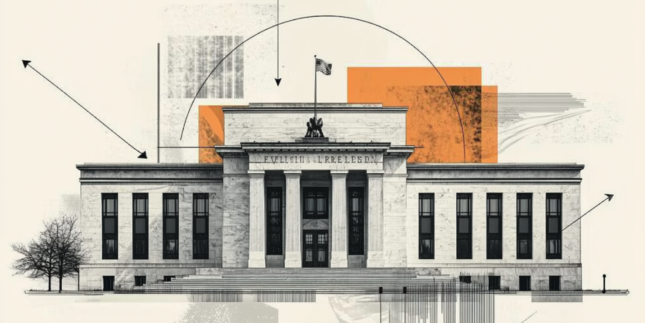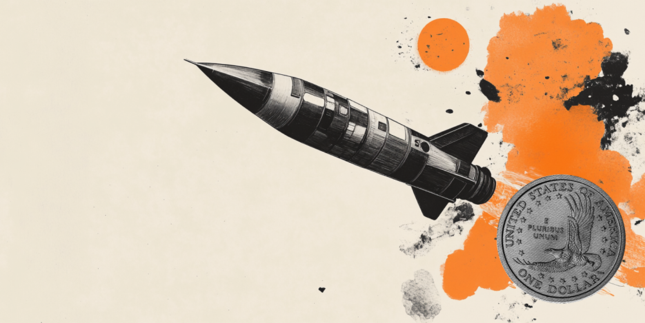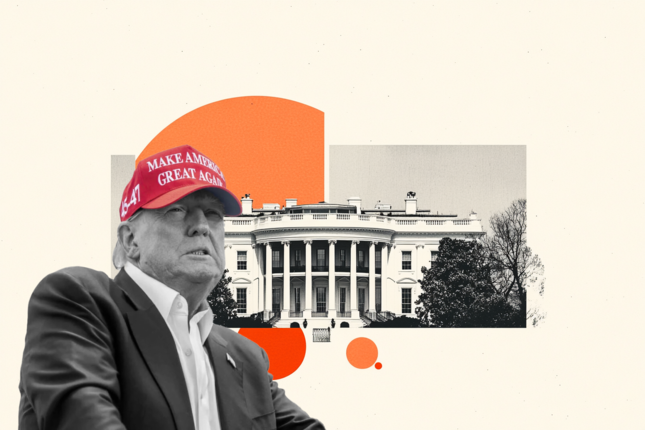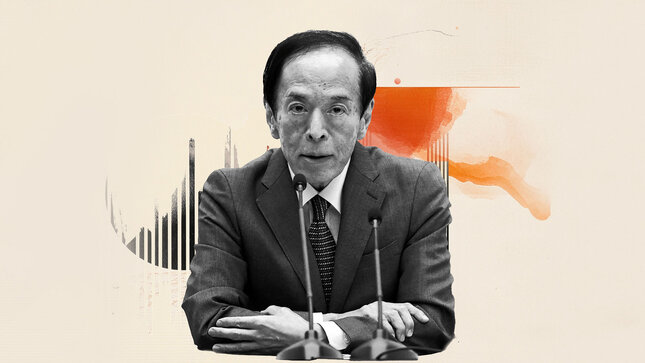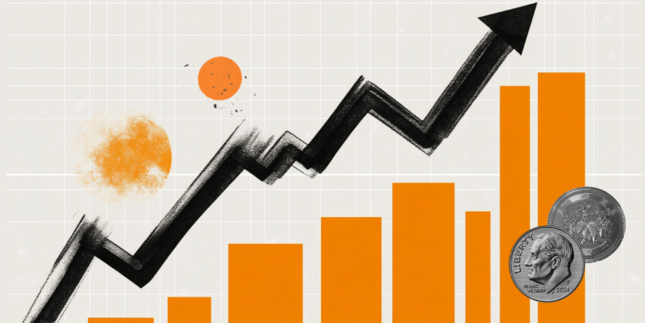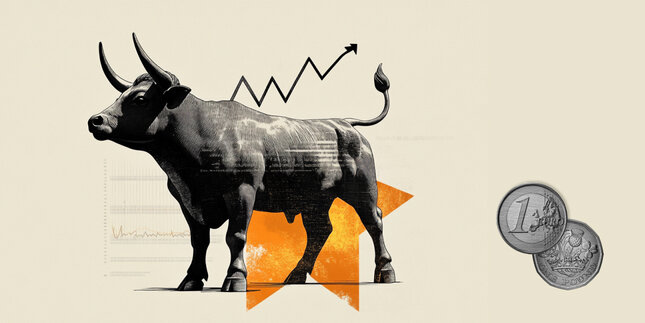EUR/USD recovers as US Dollar struggles to extend recovery
- EUR/USD rebounds to near 1.1330 as the USD Index struggles to break above the key level of 100.00.
- The US Dollar faces pressure due to a weak US economic outlook in the face of Trump’s tariff policy.
- ECB officials have warned that risks to inflation are skewed to the downside.
EUR/USD flattens around 1.1330 during North American trading hours on Thursday. The major currency pair recovers its initial losses after sliding to near 1.1285 as the US Dollar Index (DXY), which tracks the Greenback’s value against six major peers, gives back some early gains after failing to extend its two-day recovery above the psychological level of 100.00.
The outlook of the US Dollar (USD) looks grim given the unexpected contraction in the United States (US) Q1 Gross Domestic Product (GDP), softer job growth, and US-China trade uncertainty.
Data released Wednesday showed that the US economy declined by 0.3% on an annualized basis as firms frontloaded imports from their foreign suppliers to avoid higher tariffs, which were announced by US President Donald Trump on the so-called “Liberation Day”. This is the first time in three years that the US has faced an economic contraction in a quarter.
Analysts at Morgan Stanley believe that the current GDP data “doesn’t fully reflect the real impact of new economic policies” by US President Trump, and warn of a “slower labor growth, a surge in inflation and a sharp slowdown in retail spending”.
The US ADP reported on Wednesday that the private sector added 62K fresh workers in April, significantly lower than estimates of 108K and the prior release of 147K.
Meanwhile, comments from White House officials have indicated that the US-China trade war will not be resolved in the near term. US Trade Representative Jamieson Greer stated in an interview with Fox News on Wednesday that trade discussions with Beijing have not been initiated yet since the imposition of reciprocal tariffs, the South China Morning Post (SCMP) reported. Greer clarified that no official discussions with Beijing are “underway”.
Daily digest market movers: EUR/USD rebounds as Euro outperforms
- The recovery move in the EUR/USD pair is also driven by Euro's (EUR) outperformance against its peers despite firming expectations that the European Central Bank (ECB) will cut interest rates in the June policy meeting. Traders have become increasingly confident that the ECB will reduce its Deposit Facility rate by 25 basis points (bps) to 2% as many officials have warned about downside risks to Eurozone inflation.
- ECB officials have expressed concerns that Eurozone inflation could undershoot the central bank’s target of 2%. Policymakers believe that growth will be hit badly by the fallout of tariffs by US President Trump and that its impact will be “net disinflationary” for the continent.
- For fresh cues on inflation, investors await the preliminary Eurozone Harmonized Index of Consumer Prices (HICP) data for April, which will be released on Friday. According to the estimates, the headline HICP rose at a moderate pace of 2.1% on year, slightly lower than the 2.2% increase seen in March. In the same period, the core HICP, which excludes volatile components like food, energy, alcohol, and tobacco, is expected to have grown at a faster pace of 2.5% compared to the prior reading of 2.4%.
- Ahead of the Eurozone HICP, the inflation data from its major member states have indicated that price pressures cooled down in Germany and France but remained stable in Spain and Italy.
- Meanwhile, flash Eurozone Q1 GDP came in stronger-than-expected on both a quarterly and annual basis. Eurostat reported that the economy grew by 0.4% quarter-on-quarter, higher than what economists had expected and the previous reading of 0.2%. However, the Q1 GDP data doesn’t yet reflect the impact of tariffs by US President Trump on automobiles.
Euro PRICE Today
The table below shows the percentage change of Euro (EUR) against listed major currencies today. Euro was the strongest against the Japanese Yen.
| USD | EUR | GBP | JPY | CAD | AUD | NZD | CHF | |
|---|---|---|---|---|---|---|---|---|
| USD | 0.07% | 0.07% | 1.14% | 0.13% | 0.17% | 0.20% | 0.30% | |
| EUR | -0.07% | 0.00% | 1.06% | 0.02% | 0.08% | 0.13% | 0.21% | |
| GBP | -0.07% | 0.00% | 1.04% | 0.05% | 0.08% | 0.13% | 0.21% | |
| JPY | -1.14% | -1.06% | -1.04% | -1.02% | -0.95% | -0.97% | -0.90% | |
| CAD | -0.13% | -0.02% | -0.05% | 1.02% | 0.05% | 0.07% | 0.16% | |
| AUD | -0.17% | -0.08% | -0.08% | 0.95% | -0.05% | 0.04% | 0.12% | |
| NZD | -0.20% | -0.13% | -0.13% | 0.97% | -0.07% | -0.04% | 0.09% | |
| CHF | -0.30% | -0.21% | -0.21% | 0.90% | -0.16% | -0.12% | -0.09% |
The heat map shows percentage changes of major currencies against each other. The base currency is picked from the left column, while the quote currency is picked from the top row. For example, if you pick the Euro from the left column and move along the horizontal line to the US Dollar, the percentage change displayed in the box will represent EUR (base)/USD (quote).
Technical Analysis: EUR/USD holds 1.1300
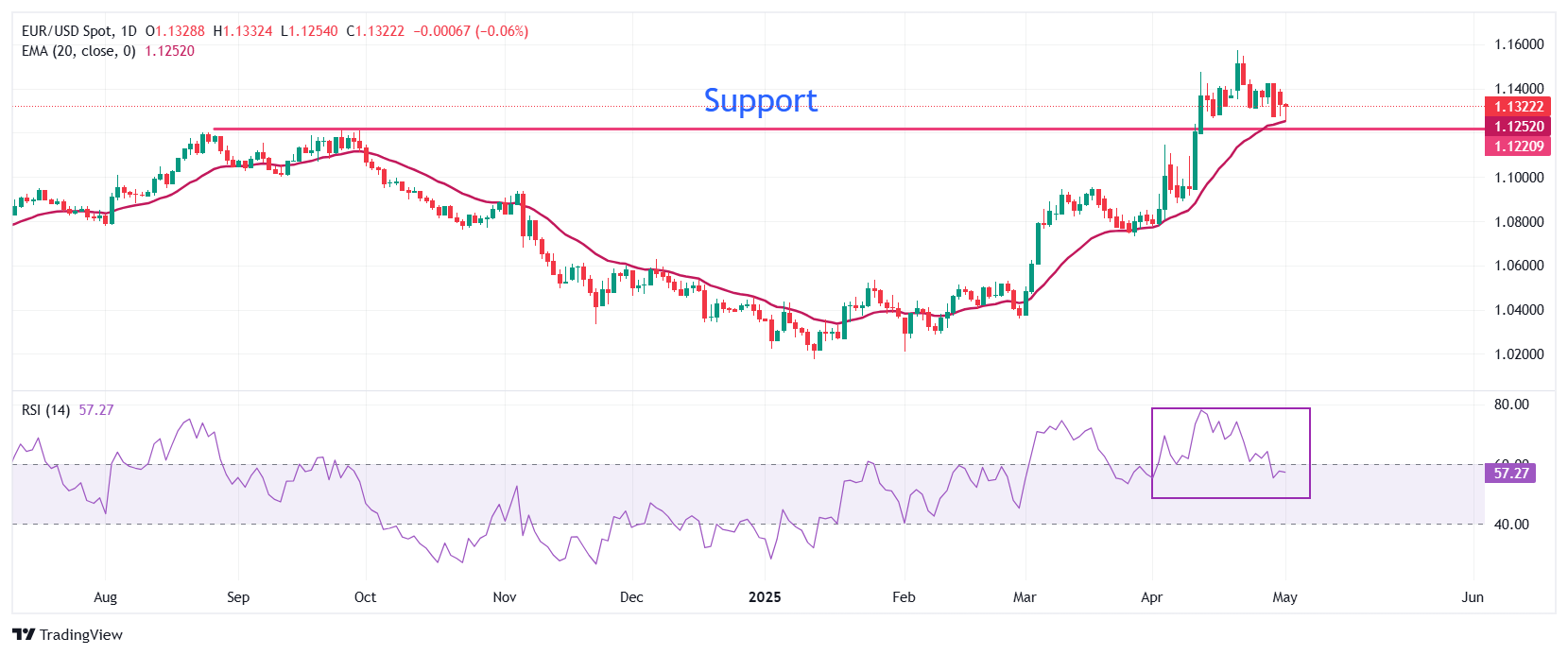
EUR/USD strives to hold the key level of 1.1300 in Thursday’s European session. The pair bounces back after a mean-reversion to near the 20-day Exponential Moving Average (EMA), which trades around 1.1250.
The 14-day Relative Strength Index (RSI) falls inside the 40.00-60.00 range, indicating that the bullish momentum is concluded for now. However, the upside bias still prevails.
Looking up, the psychological level of 1.1500 will be the major resistance for the pair. Conversely, the 25 September high of 1.1214 will be a key support for the Euro bulls.
US-China Trade War FAQs
Generally speaking, a trade war is an economic conflict between two or more countries due to extreme protectionism on one end. It implies the creation of trade barriers, such as tariffs, which result in counter-barriers, escalating import costs, and hence the cost of living.
An economic conflict between the United States (US) and China began early in 2018, when President Donald Trump set trade barriers on China, claiming unfair commercial practices and intellectual property theft from the Asian giant. China took retaliatory action, imposing tariffs on multiple US goods, such as automobiles and soybeans. Tensions escalated until the two countries signed the US-China Phase One trade deal in January 2020. The agreement required structural reforms and other changes to China’s economic and trade regime and pretended to restore stability and trust between the two nations. However, the Coronavirus pandemic took the focus out of the conflict. Yet, it is worth mentioning that President Joe Biden, who took office after Trump, kept tariffs in place and even added some additional levies.
The return of Donald Trump to the White House as the 47th US President has sparked a fresh wave of tensions between the two countries. During the 2024 election campaign, Trump pledged to impose 60% tariffs on China once he returned to office, which he did on January 20, 2025. With Trump back, the US-China trade war is meant to resume where it was left, with tit-for-tat policies affecting the global economic landscape amid disruptions in global supply chains, resulting in a reduction in spending, particularly investment, and directly feeding into the Consumer Price Index inflation.
BRANDED CONTENT
Finding the right broker for trading EUR/USD is crucial, and we've identified the top choices for this major currency pair. Read about their unique features to make an informed decision.
Forex News
Keep up with the financial markets, know what's happening and what is affecting the markets with our latest market updates. Analyze market movers, trends and build your trading strategies accordingly.







